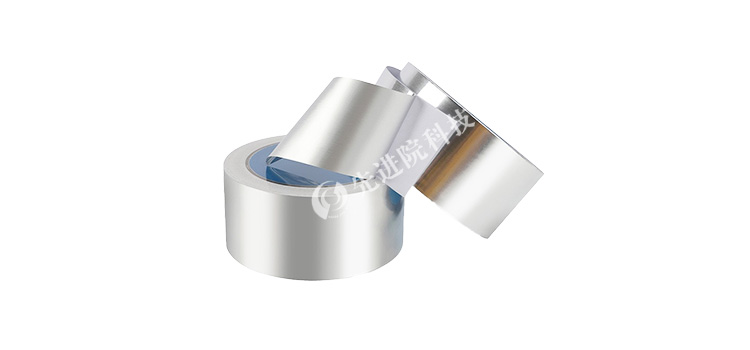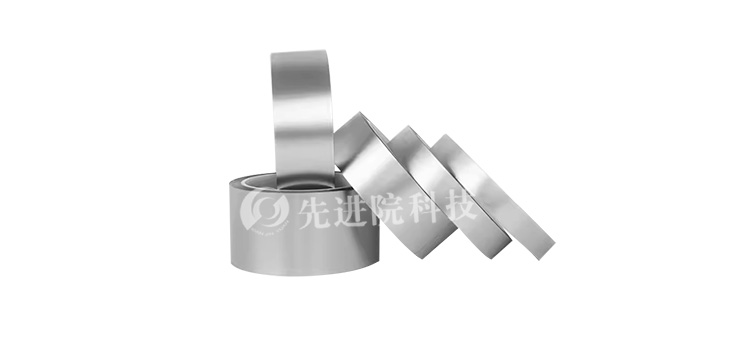Brief introduction
In the field of modern materials science,PI tin plated filmAs an innovative material with tin coating on the surface of PI (polyimide) film, it has good conductivity, solderability, and corrosion resistance, and is widely used in fields such as electronics and communication. However, in practical applications, it may be used in conjunction with other coatings such as gold plating, silver plating, and other common coatings, so studying their compatibility is crucial. This article will explore the relationship between PI tin plated film andGold plating, silver platingWait for the compatibility of the coating, whether there will be mutual interference or corrosion, and refer to itAdvanced Institute (Shenzhen) Technology Co., LtdRelated research results.
2、 Characteristics of PI Tin Coating, Gold Plating, and Silver Plating
- PI tin plated film
- PI tin plated film is a material coated with a tin layer on the surface of polyimide film. Its appearance is smooth, the tin layer is uniform and fine, and it has good conductivity, solderability, and corrosion resistance. Strict production processes ensure stable quality, making it a high-quality choice for high-tech products and playing an important role in fields such as electronics and communication.
- Gold-plated film
- The gold plating layer has good conductivity, corrosion resistance, and oxidation resistance. Gold has very stable chemical properties and is not easily reacted with other substances. It is commonly used in high-end electronic devices, jewelry, and other fields to provide good contact performance and aesthetics.
- Silver plated film
- The silver plating layer also has excellent conductivity, ranking among the top in metal conductivity. In addition, silver plating also has a certain degree of corrosion resistance, but silver is easily corroded by sulfides in the air, and the surface will gradually turn black. However, it is widely used in some electronic components that require extremely high conductivity.

3、 Compatibility experiment design
- Experimental purpose
- Explore whether there is mutual interference or corrosion between PI tin plated film and gold/silver plated layers under different environmental conditions.
- experimental materials
- PI tin plated film samples (partially provided by Advanced Institute (Shenzhen) Technology Co., Ltd.), gold-plated samples, and silver plated samples.
- Experimental environment setup
- Set up environmental chambers with different temperatures (25 ℃, 50 ℃, 80 ℃) and humidity (30%, 60%, 90%), as well as experimental setups that simulate different chemical environments (such as immersion in acidic, alkaline, and neutral solutions).
- Experimental indicators
- Observe and record whether there are discoloration, corrosion pits, peeling and other phenomena on the surface of each coating under different experimental conditions, and measure the changes in its conductivity.
4、 Comparison of experimental data
- Temperature influence
- After 100 hours of observation at 25 ℃,PI tin plated filmNo significant discoloration, corrosion, or changes in conductivity were observed in the samples in contact with the gold plating layer. The sample in contact with the PI tin plated film and silver plated layer showed slight oxidation on the surface of the silver plated layer (judged by a slight darkening of the surface color), but the conductivity change was within an acceptable range (when the silver plated layer existed alone, the conductivity decreased by about 1% after 100 hours at 25 ℃, and decreased by about 1.5% after contact with the PI tin plated film).
- After 100 hours in a 50 ℃ environment, the sample with PI tin plated film in contact with the gold plating layer still maintains good conductivity on the surface of the gold plating layer without significant changes. The samples in contact with the PI tin plated film and silver plated layer showed increased oxidation on the surface of the silver plated layer, significantly darker color, and a decrease in conductivity of about 3% (the conductivity of the silver plated layer decreased by about 2% after 100 hours at 50 ℃ alone).
- After 100 hours at 80 ℃, the sample with PI tin plated film in contact with the gold plating layer showed minimal peeling of the gold plating layer (observed under a microscope), and the conductivity decreased by about 0.5%. The sample with PI tin plated film in contact with the silver plating layer showed corrosion pits on the surface of the silver plating layer, and the conductivity decreased by about 5% (the conductivity of the silver plating layer decreased by about 3% after 100 hours at 80 ℃ alone).
- CHmin
- After 200 hours in a 30% humidity environment, there was no significant change in the sample where the PI tin plated film was in contact with the gold plating layer. The sample in contact with the PI tin plated film and silver plated layer showed slight sulfurization on the surface of the silver plated layer (trace amounts of sulfur element were detected through energy spectrum analysis), and the conductivity decreased by about 0.8% (the conductivity of the silver plated layer decreased by about 0.5% after 200 hours under 30% humidity alone).
- After 200 hours in a 60% humidity environment, the sample with PI tin plated film in contact with the gold plating layer showed minimal water vapor adsorption on the surface of the gold plating layer, but it did not affect its performance. The sample in contact with the PI tin plated film and silver plated layer showed an increased sulfurization phenomenon on the surface of the silver plated layer, with a decrease in conductivity of about 2% (the conductivity of the silver plated layer decreased by about 1% after 200 hours at 60% humidity alone).
- After 200 hours in a 90% humidity environment, the sample with PI tin plated film in contact with the gold plating layer showed an increase in water vapor adsorption on the surface of the gold plating layer, but no corrosion or significant decrease in conductivity occurred. The sample in contact with the PI tin plated film and silver plated layer showed significant corrosion on the surface of the silver plated layer, with a decrease in conductivity of about 4% (the conductivity of the silver plated layer decreased by about 2% after 200 hours at 90% humidity alone).
- Chemical environmental impact
- In the neutral solution immersion (deionized water with pH=7, soaking for 50 hours), no significant changes were found in the sample where the PI tin plating film was in contact with the gold plating layer. The sample of PI tin plated film in contact with the silver plating layer showed a very small amount of silver ion leaching on the surface of the silver plating layer (a slight increase in silver ion concentration was detected by atomic absorption spectroscopy), and the conductivity decreased by about 1% (the conductivity of the silver plating layer decreased by about 0.5% after soaking in neutral solution for 50 hours alone).
- In the acidic solution immersion (diluted hydrochloric acid solution with pH=3, soaking for 30 hours), the sample in contact with the PI tin plating film and the gold plating layer showed no corrosion on the surface of the gold plating layer, but a small amount of hydrogen gas was generated (possibly due to the adsorption of hydrogen gas generated by the reaction between tin and acid in the PI tin plating film on the surface of the gold plating layer), and the conductivity decreased by about 0.3%. The sample in contact with the PI tin plated film and silver plating layer showed severe corrosion on the surface of the silver plating layer, with a large amount of silver ions leaching out and a decrease in conductivity of about 8% (the conductivity of the silver plating layer decreased by about 5% after being immersed in an acidic solution for 30 hours alone).
- In alkaline solution immersion (sodium hydroxide solution with pH=10, soaking for 30 hours), the sample with PI tin plating film in contact with the gold plating layer showed no corrosion on the surface of the gold plating layer and no significant change in conductivity. The sample in contact with the PI tin plated film and silver plated layer showed a certain degree of corrosion on the surface of the silver plated layer, and the conductivity decreased by about 3% (the conductivity of the silver plated layer decreased by about 2% after being immersed in alkaline solution for 30 hours alone).

5、 Analysis of mutual interference or corrosion phenomena
- PI tin plated film and gold plated layer
- According to experimental data, in most cases,PI tin plated filmGood compatibility with the gold plating layer. In high temperature, high humidity, and chemical environments, although there are some slight changes, there is no serious mutual interference or corrosion phenomenon. This may be due to the highly stable chemical properties of gold, which makes it less prone to chemical reactions with tin.
- PI tin plated film and silver plated layer
- In contrast, the compatibility between PI tin plated film and silver plated layer is poor. In high temperature, high humidity, and acidic chemical environments, silver plating is prone to oxidation, sulfurization, corrosion, and other phenomena, and these phenomena become more severe when in contact with PI tin plating film. This may be due to the relatively active chemical properties of silver itself, which easily reacts with oxygen, sulfides in the air, and ions in the solution in these environments. PI tin plating film may play a catalytic or promoting role in these reactions.
6、 Conclusion
- Through experimental data comparison, it can be seen that PI tin plated film and gold plated layer have good compatibility under various environmental conditions. Although there may be slight changes under some extreme conditions, there is basically no serious mutual interference or corrosion phenomenon.
- However, the compatibility between PI tin plated film and silver plated layer is poor. In environments such as high temperature, high humidity, and acidity, the silver plated layer is prone to various corrosion phenomena, which are exacerbated when in contact with PI tin plated film.
- In practical applications, if PI tin plated film needs to be used together with other coatings, it can be safely used in a wide range of environmental conditions when combined with a gold plating layer. However, when combined with a silver plating layer, environmental factors need to be carefully considered, or additional protective measures such as sealing and coating should be taken. At the same time, related enterprises such as Advanced Institute (Shenzhen) Technology Co., Ltd. should also fully consider the compatibility issues with other coatings when further developing PI tin plated film related products, in order to improve the reliability and stability of the products.
The above data is for reference only, and specific performance may vary due to production processes and product specifications.






